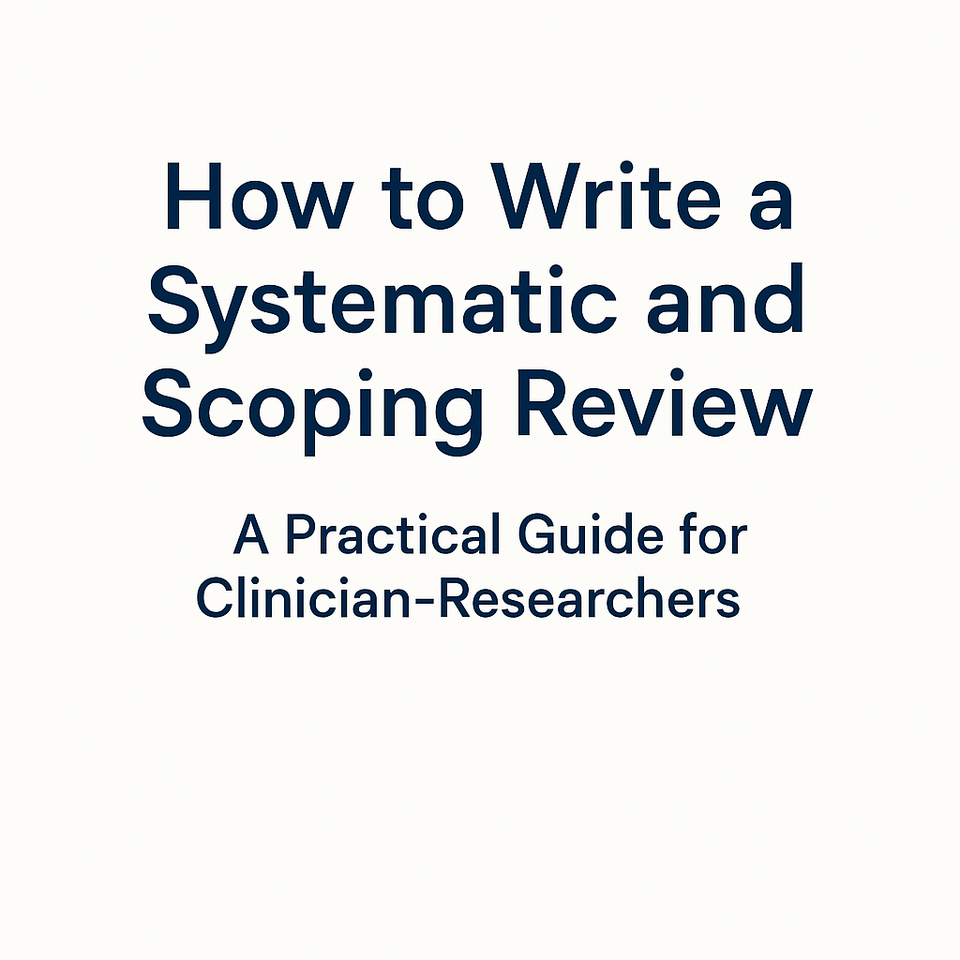How to Write a Systematic and Scoping Review: A Clinician-Researcher’s Guide
Published in Biomedical Research

Systematic and scoping reviews serve as the backbone of evidence synthesis in healthcare research. As the volume of scientific literature continues to expand, these reviews help clinicians, researchers, and policymakers make sense of emerging data, define knowledge gaps, and shape future research directions. Despite their growing importance, many researchers particularly early-career clinicians struggle with choosing the right type of review and executing it effectively. This guide outlines key considerations and practical steps to undertake both systematic and scoping reviews with methodological rigor.
A systematic review is designed to answer a focused clinical or research question through a transparent and replicable methodology. It begins with a clearly defined question, often structured using the PICO or PECO framework (Population, Intervention or Exposure, Comparator, and Outcome). The next essential step is to develop and register a review protocol, typically on platforms like PROSPERO or the Open Science Framework (OSF), detailing eligibility criteria, databases to be searched, and methods for study selection and data synthesis. A comprehensive literature search must be conducted across multiple databases such as PubMed, Embase, Web of Science, and the Cochrane Library, using a combination of controlled vocabulary (e.g., MeSH terms) and free-text keywords.
Once the literature search is complete, study selection is conducted in duplicate using tools like Rayyan or Covidence to minimize selection bias. Included studies are then assessed for quality and risk of bias using tools appropriate for the study design such as Cochrane’s RoB 2 for randomized trials or ROBINS-I for non-randomized studies. Data extraction follows, focusing on methodological features, sample characteristics, and outcome measures. Where appropriate, a meta-analysis can be performed using statistical software such as RevMan or R. The findings should be reported according to PRISMA 2020 guidelines, with a transparent flow diagram, summary tables, and critical interpretation of the results.
In contrast, a scoping review is more exploratory and is used when the aim is to map the breadth and depth of literature in a given field rather than answer a narrowly defined question. It is especially useful in emerging fields or areas with heterogenous study designs and methodologies. The scoping review process follows frameworks such as the JBI (Joanna Briggs Institute) methodology and emphasizes the PCC (Population, Concept, Context) framework instead of PICO. Although protocol registration is not mandatory for scoping reviews, it is increasingly encouraged for transparency. The literature search is iterative and inclusive, covering both peer-reviewed and grey literature to ensure a comprehensive evidence base.
Study selection and data charting in scoping reviews are also conducted in duplicate, focusing on descriptive characteristics such as study design, setting, population, interventions, and key findings. Quality appraisal is optional but may add value depending on the goals of the review. The results are synthesized thematically or narratively, often accompanied by tables or graphical representations. The PRISMA-ScR (Scoping Review) checklist should be followed to ensure standardized reporting and enhance reproducibility.
Choosing between a systematic and a scoping review depends on your research objective. If your goal is to address a well-defined clinical question with rigorous appraisal and potentially quantitative synthesis, a systematic review is appropriate. If instead, you aim to explore a broad topic, clarify key concepts, or identify gaps in the evidence, then a scoping review is more suitable. Both types of reviews require meticulous planning, clear documentation, and often interdisciplinary collaboration involving librarians, methodologists, and statisticians.
In conclusion, contributing a well-executed review can significantly advance your academic profile while shaping clinical practice and research policy. By following standardized protocols, using validated tools, and adhering to PRISMA reporting guidelines, you ensure the credibility and impact of your review. Whether you're pursuing precision oncology, molecular diagnostics, or public health research, mastering evidence synthesis methodologies is essential for impactful translational research.





Please sign in or register for FREE
If you are a registered user on Research Communities by Springer Nature, please sign in